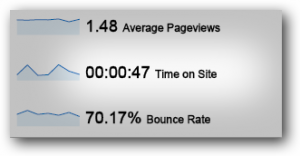What Do We Mean When We Say a Conversion?
At Arc Intermedia, we consider ourselves customer acquisition specialists. That is, we specialize in helping our clients secure new customers.
That starts with sales leads.
And that starts with a conversion.
So what’s a conversion? I’m glad you asked, since it’s the title of my next section.
Defining a conversion

To us at Arc, a conversion constitutes anyone who takes an action to contact a company or provide contact information to the company. More specifically, for the ultimate prospect of making a purchase.
Conversion actions include:
- Making a phone call to the company
- Initiating a live chat with the company
- Completing a web form that provides some type of contact information
Form completions can include:
- Submitting a question or request
- Providing information to access some type of asset or download (like a whitepaper)
- Signing up for an enewsletter
In essence, whenever someone takes an action in which a site visitor provides contact information for future potential follow-up, we consider it a conversion. Our ultimate goal is to secure a sale from this conversion, but there are also other actions beyond what’s listed above that can be viewed as a conversion.
Other forms of conversions can include:
- Signing up for an event
- Making an online purchase
- Downloading an app
- Registering an account
- Upgrading an account
- Participating in a survey
- Installing a plugin
- And more

Defining What’s Not a Conversion
We set a high bar for ourselves. We believe a conversion should be a legitimate inquiry or form of contact provided. But not every company agrees. Some act faster and looser with the term.
We’ve seen companies with broad interpretations of conversions.
Actions some consider a conversion include:
- Spending a certain amount of time on a page
- Spending a certain amount of time on the site in general
- Clicking a button from one page into a page the company wants prospects to visit
- Downloading an asset that wasn’t gated by a form
These are all very important metrics. But in our minds, if you don’t get something tangible out of them – meaning contact information from a site visitor – than it wasn’t an actual conversion. It was a good step toward a conversion, but to us: no lead, no conversion.
You may notice (if you got through the whole conversion-type list earlier in this article) that taking a survey was included but not answering a poll. That’s because for the most part to answer a poll question is to engage, but not necessarily to provide contact information, and thus to us not a real conversion.
Getting them onto that page you want them to visit is great. But what do they do once they’re there? Having them download an asset is terrific. But if they wanted that asset, might they have been willing to give up their email address for it?
And if you have their email address, you can remain in contact with them. You can nurture them from a lead into a warm lead into a sale.
People tell me I have a nurturing instinct
Great, you got someone to give you contact information on your website. Now what?
Securing a conversion is only the first step.
Depending on the lead type, an immediate sale may not be possible. You may need to touch the prospect several times before he or she is ready to buy.
That’s called lead nurturing, and it’s an extremely powerful technique. I’ll delve into it in more detail in a future post.
In the meantime, here is some great related content to enjoy:


